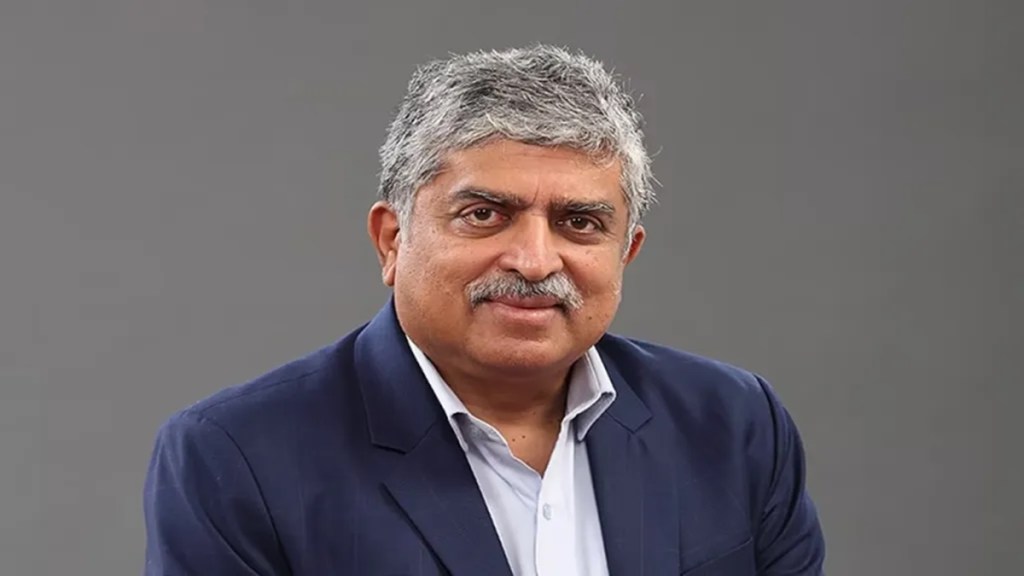India is on the cusp of a transformative phase where the country’s robust digital public infrastructure could be combined with the power of artificial intelligence to unlock innovations at an unprecedented scale, Infosys chairman and Aadhaar architect, Nandan Nilekani said on Friday.
Speaking at the Global Technology Summit, Nilekani said the country’s digital public infrastructure (DPI) offers a strong springboard for AI-led development.
“AI makes DPI better,” Nilekani said, emphasising that the digital infrastructure built over the past decade is now being enriched by artificial intelligence. “India will be uniquely placed because of its history, and it will combine DPI and AI to create a whole new way of doing things,” he said.
According to him, the promise of AI is immense, but the path to implementation isn’t without obstacles. “AI is not easy, certainly not an overnight magic,” he noted, urging caution against the current wave of excessive optimism. “There’s a lot to be done if you really want to make all this AI stuff work. And all transitions are painful… this has happened before in every industry. The difference this time is the hype is at a different level. People think it is some ‘pixie dust’.”
Nilekani stressed that India’s approach to AI must go beyond convenience and focus on improving lives, especially at a population scale. “The running theme in India is how to use AI to make lives better at a low cost,” he said. He pointed out that rather than looking for broad applications, the country is wisely focusing on narrow, high-impact use cases, ensuring that AI is safe, responsible, and inclusive.
A key distinction of this technological era, Nilekani said, is that for the first time, trust is being placed in non-human intelligence. “We didn’t do that earlier because previous technology was deterministic, predictable. Now, we are essentially expecting the machine to make decisions, and there’s a huge leap of confidence, a huge leap of faith in the ability of technology to take us forward,” he explained.
This shift, he argued, introduces new expectations and vulnerabilities. “People are far more forgiving of human error. But when there’s a machine error, it gets a very different response,” he said, using autonomous vehicles as a reference. “If there’s even one fatality, you’re back at the drawing board for two years,” Nilekani said.
While India has often been slow to adopt new technologies in the past, Nilekani said this time could be different. “Each cycle of technology takes less and less years. And in general, it has taken so much more time to get adopted in India. Interestingly, this time around, while we expect AI adoption also to take 10-15 years, our belief is that in India it can happen much faster,” he said.
Nilekani India’s digital revolution, marked by the success of Aadhaar and UPI, as a key factor accelerating this pace. These platforms, he noted, triggered a boom in digital payments and services, giving rise to startups like Meesho, Zepto, PhonePe, and others that have disrupted markets and shifted the centre of gravity from global players to homegrown innovation.
“India’s DPI will be the basis for using AI,” Nilekani said. “So, when we look at implementing AI at scale in India, it is built on an existing foundation of digital transformation that has happened for a decade.”
Looking ahead, Nilekani said that he expects local language support and natural user interfaces, especially voice and video, to drive the next phase of AI adoption. “We believe this will lead to India becoming AI use capital of the world,” he said. “DeepSeek or not, India will be the place where stuff gets used at the scale of one billion people like we have shown before with Aadhaar and UPI.”
He also touched on the cost dynamics, pointing out that for AI to be successful in India, it must remain affordable. “Exorbitant prices won’t work here,” he said. Open-source models tailored for Indian languages and contexts are the way forward, and many Indian developers are already working on these innovations.
Ultimately, the human-centric vision that should guide India’s AI journey. “It is not how do we use AI to make things so convenient that you lose your skills. It is not about dumbing down people,” he said, adding, “It is about using AI to improve the capacity and potential of human beings.”








